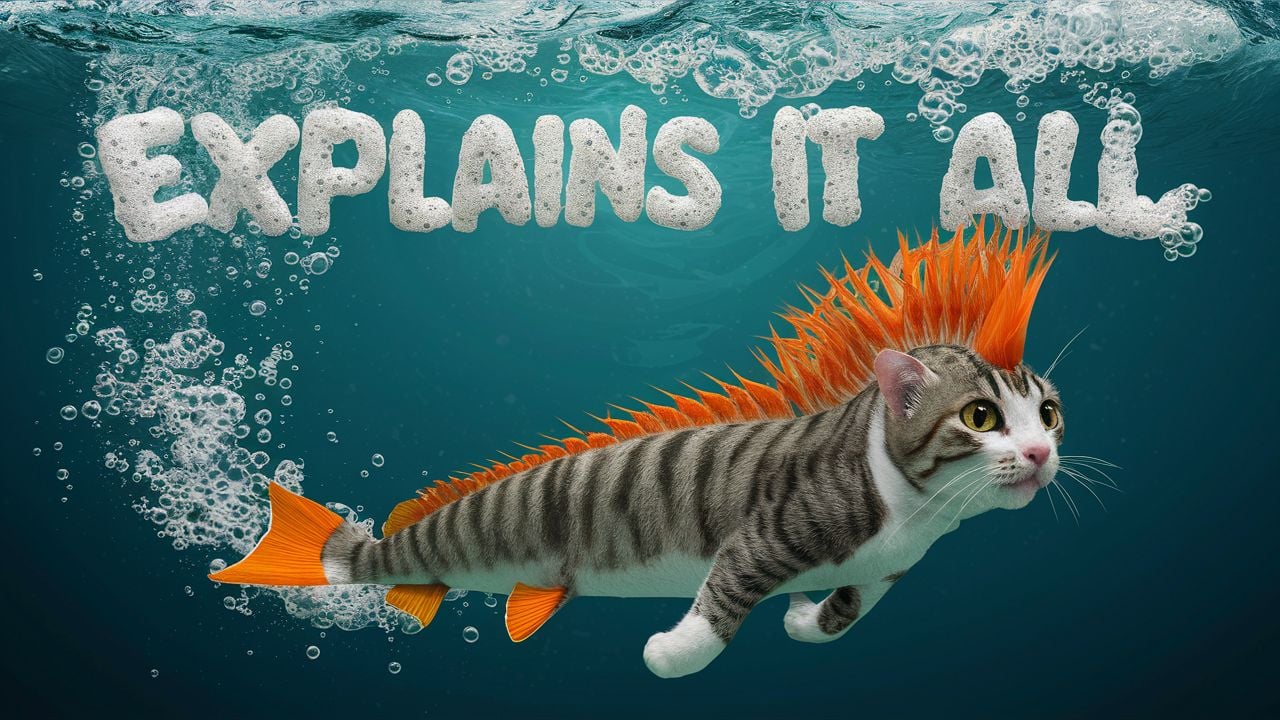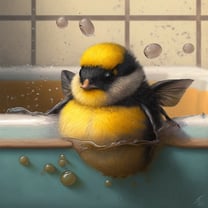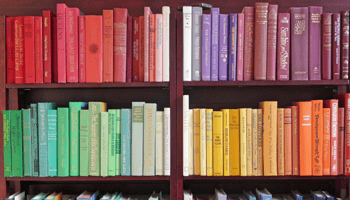Ok, admittedly this section doesn’t have a bunch to do with Taylor Swift, it’s simply where the...
Peter Pan vs. Taylor Swift (no one likes a mad woman Part 4)
Peter Pan a commentary on: Manhood
We are hit over the head with Peter’s masculinity: Wendy states, after only moments in Peter's presence, that he is "exactly like a boy" (P.P. 39). Further during Peter's introduction in the Darling nursery, the narrator explains that Peter's character and behavior is particularly "boylike" (p.P. 39). Peter's masculinity is also stressed when, during a game of pretense with Wendy and the Lost Boys, Peter naturally assumes the role of the dominant and patriarchal father and husband of the household, establishing a very stereotypical portrayal of the familial unit.
Sound familiar?
His masculine appeal is also exaggerated by the female's sexual desire for Peter. While Peter does not acknowledge his own sexual potency, the women in the text are instantly enthralled by his masculine energy (9).
Yet, to dismiss the novel as anti-female is to place it in the same category as the late-Victorian adventure novels to which the author, Barrie is responding. According to Michael Mangan, nineteenth-century boys’ adventure fiction was “aimed…at inculcating and celebrating the values of British manhood in a context which is always implicitly…imperialist” (194). In contrast, Barrie’s Peter Pan invites readers to recognize and acknowledge the obvious flaws in this way of thinking about British masculinity. Rather than praising the Englishman “with his stiff upper lip and masterly control over world affairs,” the novel celebrates women and motherhood by depicting the male characters as ineffectual, ill-tempered fools who cannot perform their active duties as men without the presence of strong women in their lives (8).
The British Empire began with England's overseas settlements and trading posts between the late 16th and early 18th centuries. At its height, it was the largest Empire in history. By 1913 the British Empire covered 35.5 million sq km or 13.7 million sq mi (24% of the planets' total land area)
The public schools of Edwardian England were greatly influential on the development of a young boy’s masculinity. They instilled in male students the appropriate qualities of English masculinity: sportsmanship, readiness, integrity, and piety. These masculine values were inculcated in boys in an effort to make them both self-sufficient and able servants of the empire (8). Indeed, the male’s desire to maintain his strength and power in the home mirrors England’s broader involvement in its empire, which entailed conquering and controlling outside nations (8).
The generation which grew up after 1860 displayed an insecurity in their masculine identities which manifested itself in a flight from domesticity, a growing disparagement of the “feminine,” a readiness to go abroad and an increasing refusal amongst late Victorian men to marry (8). The typical family structure in Victorian England was defined by the father’s role as primary income provider and strict disciplinarian, and the mother’s role as caretaker and submissive domestic partner (8). The child was expected, then, to demonstrate “a high degree of self-sufficiency, self-direction, and independence” (8).
All of Barrie's protagonists in the Peter Pan stories have masculine identities that conflict with the Victorian and Edwardian ideals of gender, and are thus marginalized and alienated from society. Wherein the protagonist becomes socially isolated because of his unconventional masculine identity and his lack of sexual interest in the female sex (9).
This ties directly to Taylor Swift:
https://aninjusticemag.com/stop-trying-to-convince-me-that-taylor-swift-is-straight-49297b304fbe
In Peter Pan, …men are represented as inherently inferior to women, yet it must seem, to them, as though they are not (8).
Mr. Darling does not allow emotion to compromise the use of logic and reason when making decisions. Moreover, he continuously asserts himself as the head of the household (8). Mr. Darling, however, is the text’s illustration of a typical Victorian male: an antagonistic father who childishly asserts his dominance in the household to make up for his lack of power in the business world (8).
For Mr. Darling, the loss of power and authority translates to the loss of respect and admiration from his wife and children; the way in which his children looked at him, “as if they did not admire him,” is what initially motivated Mr. Darling (8). Thus, his petulant attempt to demonstrate his masculinity and regain his family’s respect, results in an animated display of childish pride.
After banishing Nana from the nursery, “he felt he was a strong man again” (22). The narrator continues by revealing Mr. Darling’s motivation behind his cruelty [putting his own medicine in the dog’s bowl] is to “show who was the master in the house” (22).
Indeed, it is his unwavering pride that ultimately leads to the disappearance of his children—had Mr. Darling not chained Nana outside for the evening, the children would not have been given the opportunity to escape with Peter (8).
While there are homosexual undercurrents in the Peter Pan stories, due to the social anxiety of homosexuality and the feminized man that is displayed in [prior works], Barrie mainly sticks to the realm of the homosocial, a form of same sex bonding that is more accepted by society than the homosexual (9).
Men are permitted to be angry, sarcastic, proud, and stoic and…that’s about it (5). Women have very narrowly prescripted modes of acceptable dress and behavior as well:
They'd say I played the field before I found someone to commit to
And that would be ok
For me to do
Every conquest I had made would make me more of a boss to you
I'd be a fearless leader
I'd be an alpha type
When everyone believes ya
What's that like?
Most typically, critics either explain Peter and Hook's relationship as paternal or oppositional, thereby suggesting that there are only two socially acceptable forms of male-male interaction, the father and son dichotomy, or, the hero and villain dichotomy (9).
The traditional use of the word homosocial in history and the social sciences is homophobic, as it is often used to explain the bonding between men to avoid labeling the social transaction of the same sex as homoerotic, or as homosexual desire due to society's "fear and hatred of homosexuality"(Sedgwick 1) …Society's economic and political structures are highly dependent on homophobia, and thus, the term homosocial is much preferred over homosexual (Sedgwick 4). (9).
Although Barrie had spent nearly a decade formulating and revising the Peter Pan storyline at this point, and had already established a notable reputation, he was sure that early twentieth-century audiences would not approve of his newest theatrical production. Barrie created Peter Pan for himself, not for an audience, and in it he exposed his innermost thoughts and fears. With so much of him exposed in his play, the fear of failure was immense.This anxiety about the play's potential failure may also indicate that Barrie, himself, acknowledged thematic content that was culturally feared (9).
One common method critics use to simplify the complexity of Peter's relationship to the Lost Boys and Captain Hook while simultaneously avoiding the possibility of homosexual anxiety, is to argue that Peter is an asexual creature, incapable of having any sexual feelings for another being. Claiming that Peter is sexless is to claim that he is asexual and thereby incapable of having either heterosexual or homosexual desires (9).
Unlike Disney's inaccurate portrayal of Hook as villainous, Spielberg's characterization of Hook is mostly faithful to Barrie's original. For instance, Spielberg revives the pirate's organic nature, such as his melancholy, effeminacy, and insecurity. While Smee is removing articles of Hook's clothing, the captain melancholically reflects on the day's events. While staring at his hook, an exterior signifier of his aging body and impotency, he has an "epiphany" that his life is over" (Spielberg) (9).
Peter's lack of heterosexual interest and Hook's overt femininity, is undeniable in the original text. There is a chemistry between the two dominant males in Neverland, but with an actress playing Pan, any homosexual anxiety concerning the play is naturally removed. Peter's male-male relationship with the orphaned boys and James Hook is transformed into a heterosexual one, thus disguising the all-male society. The homoerotic undertone surrounding Hook's desperation for Peter's affection is modified into heterosexual desire to accommodate early twentieth-century audiences. The female lead in the plays is crucial in disguising the play's homosexual undertones and to make the male-male interactions socially acceptable (9).
Are you picking up what I’m putting down? In the same way Peter Pan has been reinterpreted as a father figure to the Lost Boys, foil to Hook, and actresses were thrown in the role of Peter in order to alleviate homosexual anxieties–The Taylor Swift brand covers authentic Taylor’s queerness. In public, she has a hyper-feminine appearance most times. Taylor holding hands, sitting on laps, kissing women, and even exchanging rings and other jewelry is described as ‘just friends’ even though it would be considered highly heterosexual behavior if any man replaced, say Karlie, in any of these scenarios. See my post with examples of this phenomenon:
https://kit10phish.wordpress.com/2024/01/16/taylor-swift-and-the-gaylor-double-standard/
Lastly, the Taylor Swift Brand throws a boyfriend into the mix to allay any homosexual hysteria from the general public (and collect their money). Perhaps this is why Taylor identifies strongly enough with the story of Peter Pan to overtly mention it in at least 3 songs, and allude to it in many others.
I've heard great things, Peter, but life was always easier on you
Than it was on me
And sometimes it gets me when crossing your jet stream
We both did the best we could do underneath the same Moon
In different galaxies
Clearly, Pan feels threatened by one facet of masculinity, and this is the active heterosexuality leading to paternity. Whether in relation to Wendy, Tink, or the Mermaids, Pan remains unmoved by any expression of feminine sexuality, or displays an active aversion towards it (3).
Peter's interest in Wendy is not sexually orientated but is instead rooted in his desire for purposefulness and a sense of familial normality. While Wendy's sexual desire for Peter is obvious, Peter is unable to reciprocate her lustful interests. The pretense nature of their "marriage," is nothing more than an imitation of the conventional nineteenth-century patriarchal family(9). When Wendy asks him to remain with her in the nursery, he passionately insists: ‘No one is going to catch me, lady, and make me a man’ (Barrie, p. 88). Adult gender roles as they relate to sexuality and physical maternity/paternity equate to a kind of trap in Pan’s mind [It’s the same for Taylor] (3).
As the men masqueraded, I hoped you'd return
With your feet on the ground, tell me all that you'd learned
'Cause love's never lost when perspective is earned
And you said you'd come and get me, but you were twenty-five
And the shelf life of those fantasies has expired
Lost to the Lost Boys chapter of your life
Forgive me, Peter, please know that I tried
Whether this part of Taylor’s song Peter is about making a coming out plan with Harry, finally getting to be truly together with Dianna, or Taylor talking to herself, it shows a moment decade or two being lost due to homophobia.
To avoid the harsh reality of the era’s rigid gender and sexuality codes and conventions, Barrie's protagonists escape to fantasy worlds. While these fantasy worlds provide these protagonists with temporary relief, they eventually realize that the conventions of reality are inescapable (9).
I think your house is haunted
Your dad is always mad and that must be why
And I think you should come live with
Me and we can be pirates
Then you won't have to cry
Or hide in the closet
Forgive me, Peter, my lost fearless leader
In closets like cedar, preserved from when we were just kids
In his works, Barrie constructs a new formation of the male identity--or at least a different depiction. of masculinity in comparison to the then established in hopes of abandoning the norms of Victorian and Edwardian norms-by creating male protagonists who desire other males and who display heterosexual uncertainties; however, due to nineteenth-century homophobia, these male relationships are unable to develop past the socially accepted homosocial stage. By ignoring the issues of masculinity and male homosociality, modern adaptations fail to showcase Barrie's social criticism on the negative effects of Edwardian constructions of gender identity (9).
…"the castigation of Wilde, a self-proclaimed dandy, in the popular press speaks to an already established anxiety about homosexuality and, indeed, about sexuality in general" (Wilson 604). So you see, Peter Pan is not as much about age and a fear of growing older as it is about being avoidant to social norms of Edwardian/Victorian manhood. We could say the same about Taylor:
It’s not necessarily the aging itself, she fears. Taylor Swift is afraid of the societal expectations that come with getting older.
Fully aware of Wilde's prosecution for conflicting with the rigid constructions of Victorian gender identities, Barrie openly describes Hook as a dandy and feminizes both his physical appearance and his social mannerisms. [Remember the book was written in 1911, sixteen years after Wilde’s trial.] Hook's effeminacy is implied in the following lines which are uttered during an encounter with a sleeping and "defenseless" Peter:
“Did no feeling of compassion disturb his somber breast? The man was not wholly evil; he loved flowers (I have been told) and sweet music (he was himself a mean performer on the harpsichord); and let it be frankly admitted, the idyllic nature of the scene stirred him profoundly.” (p.P. 174-175)
A few pages later in the novel following Hook's encounter with Peter, the narrator explains that
"Hook [is] not his true name," and that to reveal his real identity "would even at this date set the country in a blaze" (P.P. 185).
This statement could have many implications, including a hint at Hook's true sexuality, which we know with Wilde's trial, would indeed "set the country in a blaze." As Hook shares many similarities to Barrie, including their first name, could Hook's true identity be James Matthew Barrie? And, if Hook is indeed a representation of Barrie, is he trying to simultaneously reveal and conceal his own homosexuality?
Enter Taylor Swift’s queer flagging.
Some examples:
https://kit10phish.wordpress.com/2024/01/17/its-a-goddamn-blaze-in-the-dark-taylor-started-it/
Refutation of queer-baiting:
https://kit10phish.wordpress.com/2024/01/18/
She NEVER said she was straight:
https://kit10phish.wordpress.com/2024/01/19/
By the play's opening in 1904, Barrie had "rewritten the ending for the fifth time" (Chaney 224). Barrie eventually decided to alter the "pleasant" conclusion of the play to showcase Peter and Hook's tragic dependency on the other. The need to revise the play's conclusion for Peter and Wendy, demonstrate Barrie's need to further develop the sexual tension and dependency of the male protagonists in order to fulfill his artistic vision (9).
As the novel's conclusion reveals Peter's feelings for Hook, Hook's insecurity, and the tragic nature of Peter's inability to grow up, any plot modification would also affect its thematic content.
[Hook’s] inability to conform to society's standards cause[s] alienation and eventually results in death. His death emphasizes his inability to fit into society's standards of sexuality and gender (9). Hook commits suicide because he cannot have Peter and the boy's eternal youth (9). In Barrie's text, Hook's death is narrated as a tragedy and a great loss to Peter who displays signs of mournfulness. Peter's sadness is elucidated in the following lines which describe what takes place during the night of Hook's suicide: "He had one of his painful dreams that night, and cried in his sleep for a long time, and Wendy held him tight" (Peter Pan2 211). Once awake, he demonstrates his anxiety about sleeping, for when he is at rest his repressed feelings are exposed as he loses control over his brave facade. Peter's "painful dream" indicates his feelings of dependency and emotional attachment to Hook (9).
This cage was once just fine
Am I allowed to cry?
I dream of cracking locks
Throwing my life to the wolves
Or the ocean rocks
While the 1904 play deals with the same thematic issues as the novel, the themes are slightly more explicit and developed in the 1911 novel. Peter and Wendy, contrastingly omits the tragic ending which showcases the intimacy of Peter and Hook revealing Barrie's anxiety about the audience's reaction.
Taylor has that anxiety too:
https://kit10phish.wordpress.com/2024/01/20/symbolism-of-trapped-confined-displayed-closeted/
Sources:
1] https://disney.fandom.com/wiki/Lost_Boys
2] https://muse.jhu.edu/article/758591
3] https://www.researchgate.net/publication/231904832_Peter_Pan_and_the_White_Imperial_Imaginary
5] https://aahabershaw.com/2016/02/22/boyhood-manhood-and-peter-pan/
6] http://komunikata.id/index.php/komunikata/article/view/236
7] https://animatedmeta.wordpress.com/2014/12/06/peter-pan-and-gender-roles/
8] https://honors.libraries.psu.edu/files/final_submissions/4462
9] https://macsphere.mcmaster.ca/bitstream/11375/9569/1/fulltext.pdf
10] https://www.123helpme.com/essay/Gender-Roles-in-Peter-Pan-by-J-273202
11] https://disney.fandom.com/wiki/Lost_Boys
13] https://en.wikipedia.org/wiki/Stereotypes_of_Indigenous_peoples_of_Canada_and_the_United_States
15] https://apnews.com/article/super-bowl-native-american-mascot-chiefs-41397b038e03c01865d42a3f77766c98
17] https://www.ourkids.net/school/brief-history-of-boarding
18] https://pubmed.ncbi.nlm.nih.gov/30125077/
19] https://www.npr.org/transcripts/1129868151
20] https://scholarworks.seattleu.edu/cgi/viewcontent.cgi?article=1153&context=suurj
21] https://www.tbsnews.net/features/panorama/capitalism-racist-569746
23] https://www.refinery29.com/en-au/2023/06/11435466/blak-woman-complicated-relationship-taylor-swift



